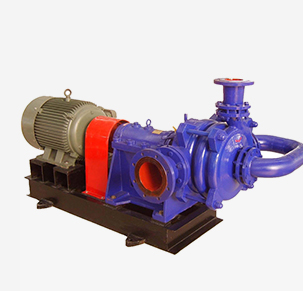Khmer
- Afrikaans
- Albanian
- Amharic
- Arabic
- Armenian
- Azerbaijani
- Basque
- Belarusian
- Bengali
- Bosnian
- Bulgarian
- Catalan
- Cebuano
- Corsican
- Croatian
- Czech
- Danish
- Dutch
- English
- Esperanto
- Estonian
- Finnish
- French
- Frisian
- Galician
- Georgian
- German
- Greek
- Gujarati
- Haitian Creole
- hausa
- hawaiian
- Hebrew
- Hindi
- Miao
- Hungarian
- Icelandic
- igbo
- Indonesian
- irish
- Italian
- Japanese
- Javanese
- Kannada
- kazakh
- Khmer
- Rwandese
- Korean
- Kurdish
- Kyrgyz
- Lao
- Latin
- Latvian
- Lithuanian
- Luxembourgish
- Macedonian
- Malgashi
- Malay
- Malayalam
- Maltese
- Maori
- Marathi
- Mongolian
- Myanmar
- Nepali
- Norwegian
- Norwegian
- Occitan
- Pashto
- Persian
- Polish
- Portuguese
- Punjabi
- Romanian
- Russian
- Samoan
- Scottish Gaelic
- Serbian
- Sesotho
- Shona
- Sindhi
- Sinhala
- Slovak
- Slovenian
- Somali
- Spanish
- Sundanese
- Swahili
- Swedish
- Tagalog
- Tajik
- Tamil
- Tatar
- Telugu
- Thai
- Turkish
- Turkmen
- Ukrainian
- Urdu
- Uighur
- Uzbek
- Vietnamese
- Welsh
- Bantu
- Yiddish
- Yoruba
- Zulu
Telephone: +86 13120555503
Email: frank@cypump.com
ធ្នូ . 27, 2024 02:27 Back to list
Understanding Sewage Ejector Systems for Efficient Wastewater Management Solutions
Understanding Sewage Ejector Systems
Sewage ejector systems are crucial components in modern wastewater management. They serve a vital role in ensuring that sewage from lower-lying areas can be effectively transported to municipal sewer systems or septic tanks. For homeowners and builders planning new constructions in basements or lower elevations, understanding how these systems function and their importance in maintaining sanitary conditions is essential.
What is a Sewage Ejector System?
A sewage ejector system, also known as a sewage pump or sewage ejector pump, is designed to move sewage waste from a low elevation up to a higher elevation so that it can flow into the main sewer line or septic system. The system typically consists of a sewage basin, a pump, and a discharge pipe. The basin collects waste, while the pump activates when the water level in the basin rises to a specific point. This activation enables the pump to expel the waste through the discharge pipe, pushing it upwards toward the main sewage line.
Components of a Sewage Ejector System
1. Sewage Basin The sewage basin is a watertight container that collects sewage and wastewater. It is usually installed underground and is designed to hold a considerable volume of sewage before activating the pump.
2. Pump The heart of the system, the pump is responsible for moving the waste from the basin to the sewage line. There are different types of pumps available, including submersible and pedestal pumps. Submersible pumps are placed directly into the sewage, while pedestal pumps are positioned above the basin.
sewage ejector systems

3. Discharge Pipe Connected to the pump, the discharge pipe transports the sewage from the pump to the sewer line. The pipe must be properly sized to handle the volume of sewage being pumped to prevent clogs and ensure efficient operation.
4. Float Switch A critical component of the system, the float switch monitors the water level within the basin. When the water rises to a predetermined level, the float switch activates the pump, ensuring that the system operates as needed without manual intervention.
Importance of Sewage Ejector Systems
Sewage ejector systems are especially important in areas where gravity alone cannot effectively transport waste. For instance, homes built in low-lying or flood-prone areas often require these systems to prevent backups and maintain sanitary conditions. Without a functioning ejector system, households could face numerous problems, including foul odors, wastewater backups, and potential health hazards.
Moreover, implementing proper maintenance practices for sewage ejector systems can extend their lifespans and prevent costly repairs. Regular inspections, cleaning of the system, and timely replacements of worn-out parts are essential practices. Homeowners should also be aware of the common signs of malfunction, such as unusual noises from the pump, frequent cycling of the pump, or slow draining in sinks and toilets.
Conclusion
In summary, sewage ejector systems play a pivotal role in effective wastewater management, particularly in situations where gravity drainage is insufficient. Understanding the components, functionality, and maintenance of these systems can help homeowners create efficient and sanitary residential environments. As urban development continues to expand, ensuring that adequate sewage management systems are in place will remain a priority for public health and environmental safety.
-
Horizontal Split Case Pump with GPT-4 Turbo | High Efficiency
NewsAug.01,2025
-
ISG Series Pipeline Pump - Chi Yuan Pumps | High Efficiency, Durable Design
NewsAug.01,2025
-
Advanced Flue Gas Desulfurization Pump with GPT-4 Turbo | Durable & Efficient
NewsJul.31,2025
-
ISG Series Vertical Pipeline Pump - Chi Yuan Pumps | Advanced Hydraulic Design&Durable Construction
NewsJul.31,2025
-
ISG Series Vertical Pipeline Pump - Chi Yuan Pumps | Energy Efficient & Low Noise
NewsJul.31,2025
-
pipeline pump - Chi Yuan Pumps Co., LTD.|High Efficiency&Low Noise
NewsJul.31,2025










